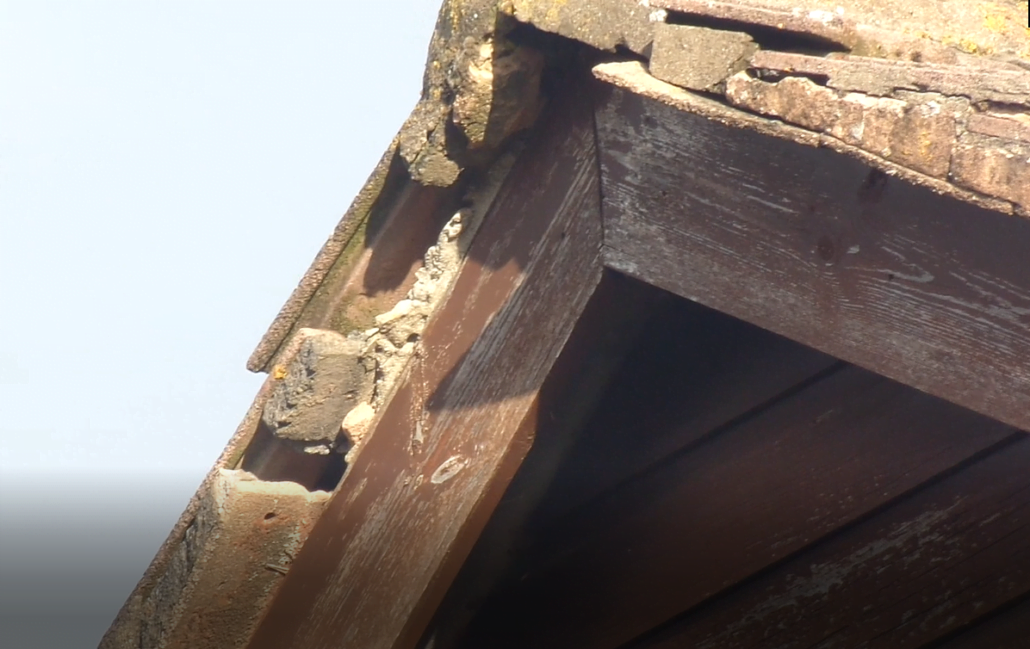Verges

What are roof verges?
In the surveying context, a verge is where the roof meets the gable or flank wall (or detached side of a house). It is the weather-proof junction between walls and roof. While surveying with the pole camera we get a good view of these! Sometimes they can be seen well from ground level if there are no houses in the way. On Youtube, we have uploaded a brief video outlining the various types of verges and you can find it here:
Wet verge
This detail or component was normally finished in sand & cement. Exposed sand & cement details tend to have a life span of around 25 years before they start to crack and detach; in some newer builds, this seems to have been reduced to 15-20 years as a result of poor mixes. The underside of this detail is called an under-cloak. This was often made from boarding containing asbestos; otherwise sheeting or plain tiles were used. A timber “ladder” was built under this and these often slip or have rot issues. This problem normally manifests itself as a slight gap between the end tiles and the tiles right on the edge of the roof.
On later works, metal clips are embedded in the sand & cement; these overlap onto the tiles, clipping them in place The sand & cement literally does get wet, absorbing rainwater. It often encases the ends of the timber battens, which can cause these to rot. If the depth of the sand & cement covering is thin, the timber may become exposed which speeds up the decay process. Sometimes they are subsequently hidden beneath profiled UPVC boards as a quick fix.
Dry verge
A more recent innovation is the Dry Verge. Dry verges attempt to improve on the reduced lifespan of exposed sand & cement and come in two different common types.
We often see the cheaper and quicker-to-install type of dry verge, the “omni-verge”. This consists of a profiled, moulded piece of plastic which follows the line of the roof, to enclose the tile and wall junction. These can perform satisfactorily as long as they are well fixed. However, they are more vulnerable to wind damage and detachment than the wet verge. Visually they are not particularly attractive because they appear to be a cheaper option.
The Rolls Royce of modern verges is the cloaked verge. This uses pre-formed tiles cast at 90⁰ that match the profile of the tiles on the main roof. It encloses the junction well and does away with the problems of exposed sand & cement. These tiles are interlocked into the roof covering so are naturally a much better fix. There should be small plastic clips between each tile; often these fall out or are omitted and if that is the case, they should be replaced. And these pre-formed tiles give a great aesthetic finish to the roof!
